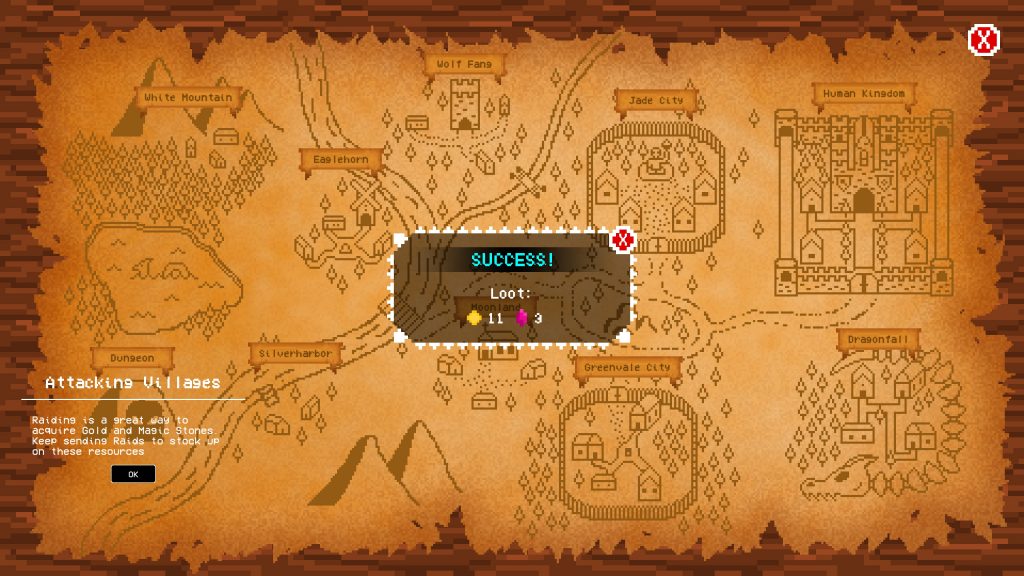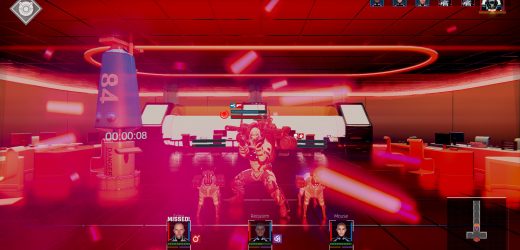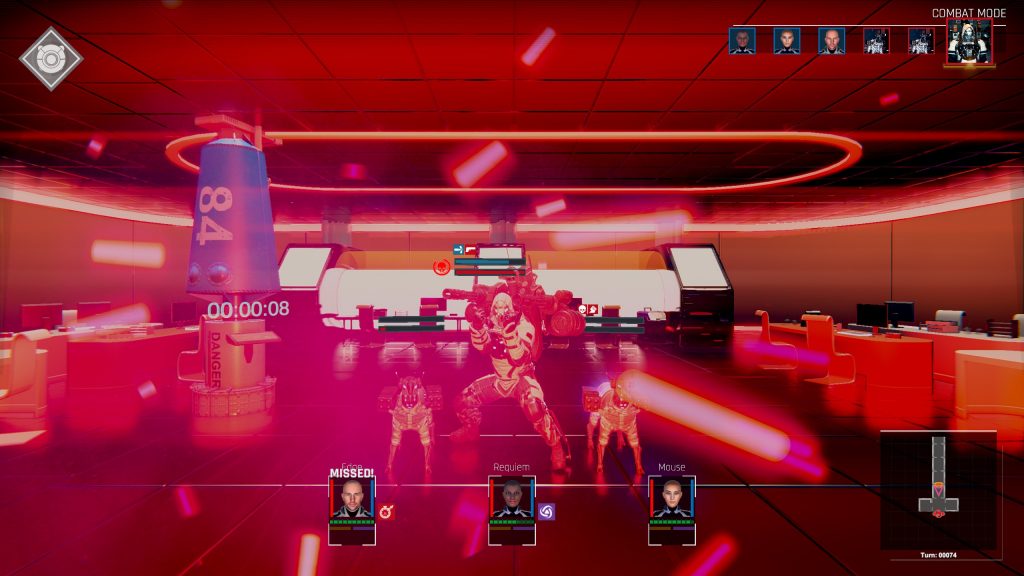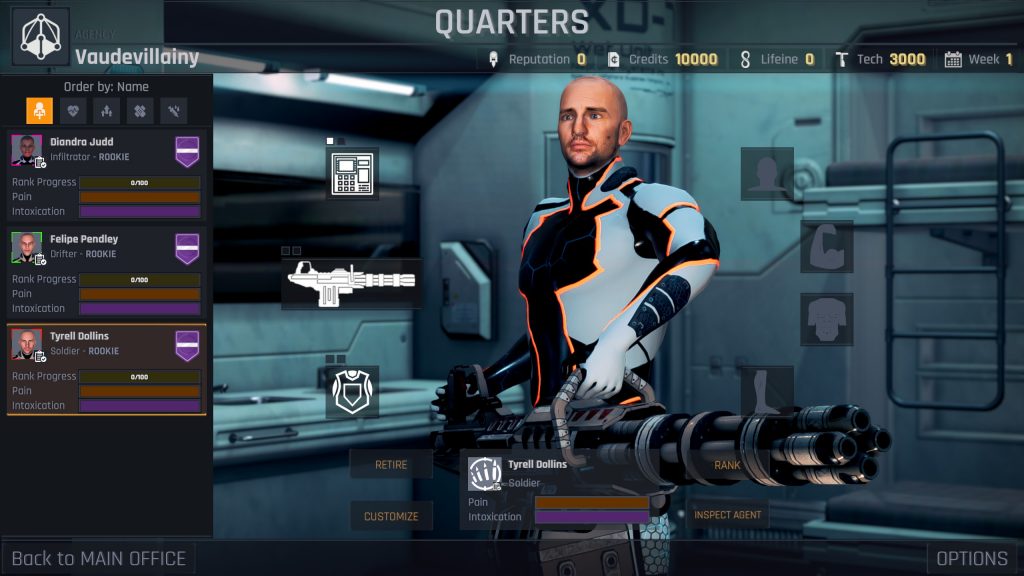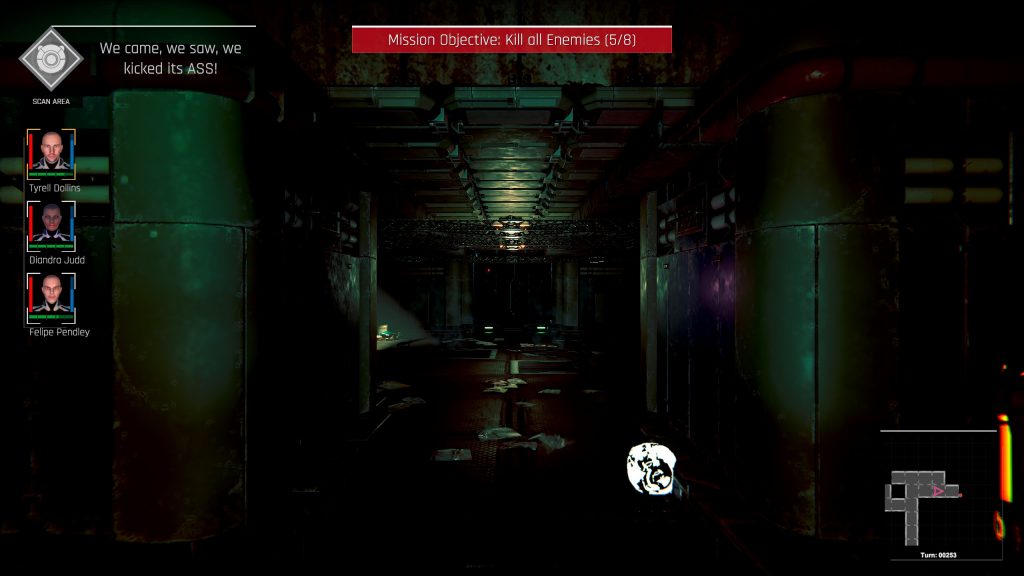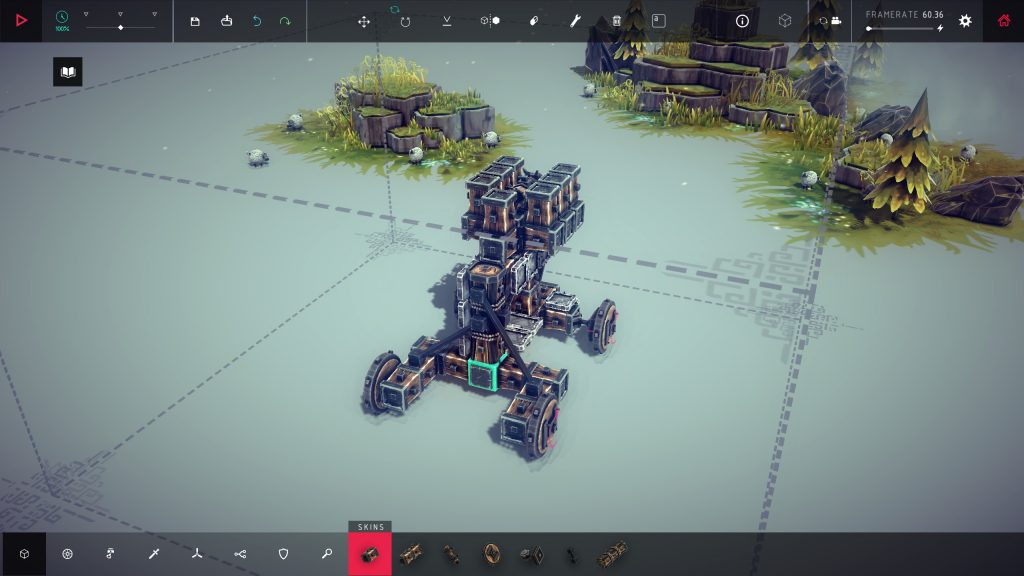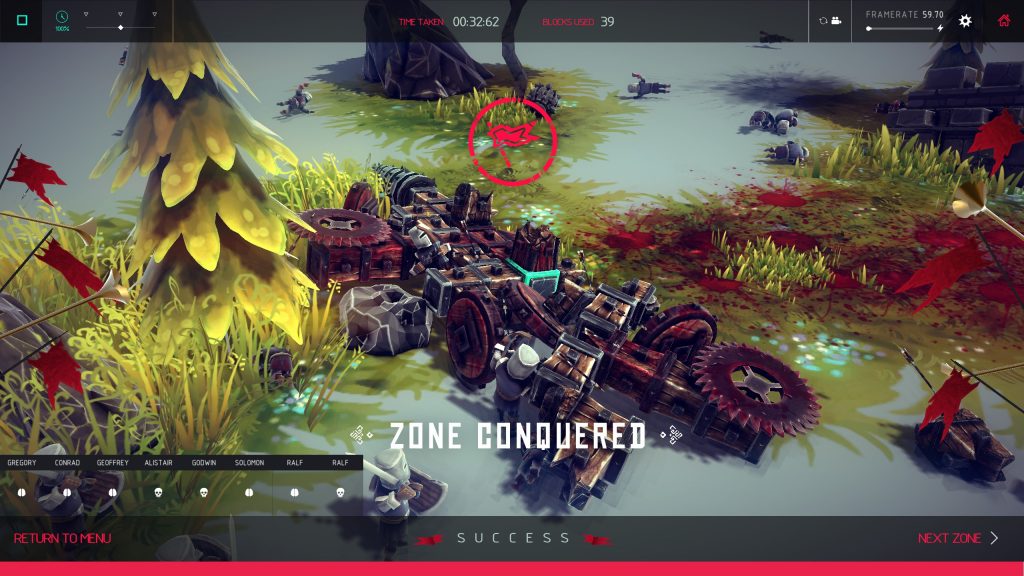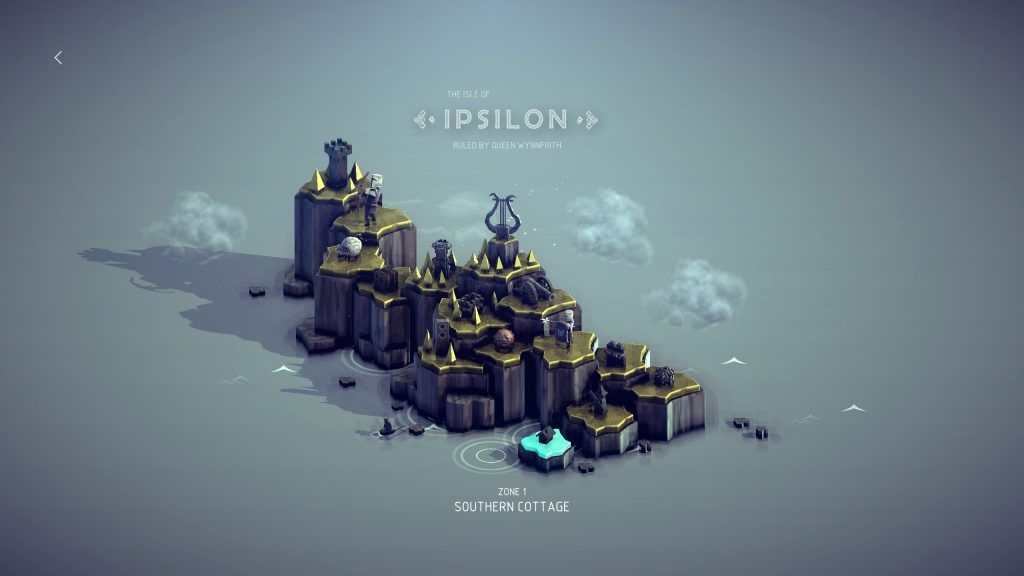Endcycle VS (Early Access Review)
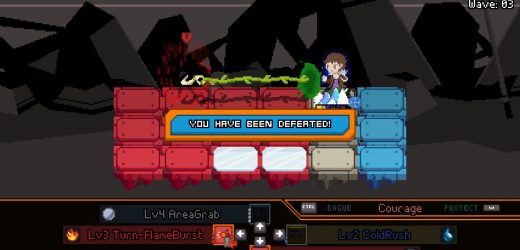
Source: Cashmoneys
Price: £12.99
Where To Get It: Steam
At first, Endcycle Vs didn’t interest me, despite loving Megaman Battle Network’s combat system of a 3×6 grid, split in two, in which the player and their opponents use abilities (Chips, in the case of the player) to attack the enemy, a new hand coming when the old one is used. After all, it was multiplayer only, and not even mod support was going to bring me to that party.
But now, it has singleplayer and… Well, I’m somewhat bouncing off it, to be quite honest.
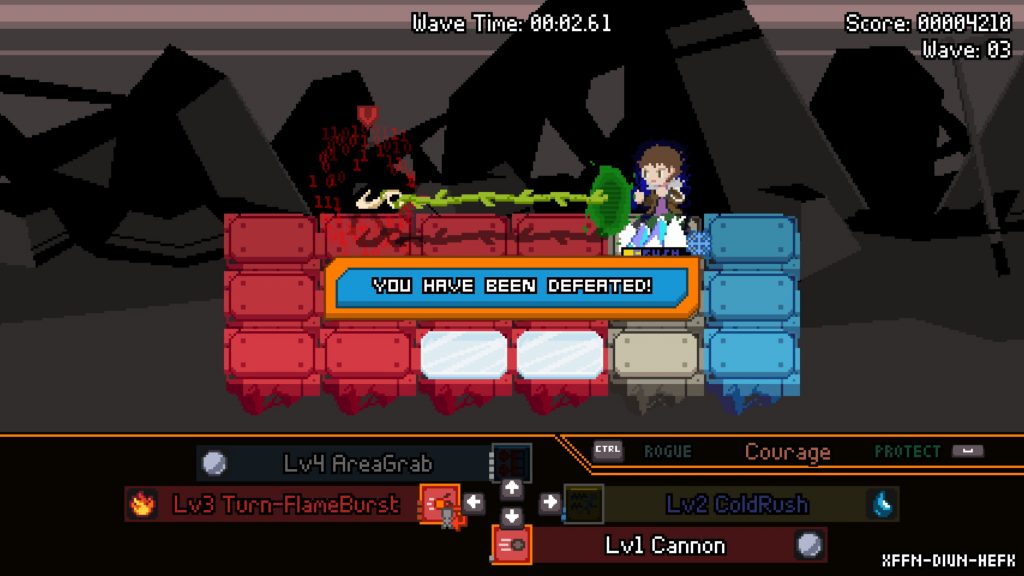
Mainly, it’s for a very simple reason: Everything is fast. And can seemingly move diagonally, although that may be just that they’re… Going really fast. In its inspiration, MegaMan Battle Network, things generally don’t move quickly. And the few enemies that do are considered the biggest pains in the ass in the series. Similarly, some moves where instant hits (known as hitscan), so you at least knew that, the moment you hit the fire button, something would get damaged.
And neither of these appear to be true, with the exception of swords, in Endcycle Vs. Spreadshots? Slowish projectiles. Cannons? Slowish projectiles. The “Rush” Sword is, in fact, a leisurely dodge. And grenade and trap type weapons both have a specific range, and are, generally speaking, slow. Meanwhile, enemies fast. Can you perhaps see the problem here?
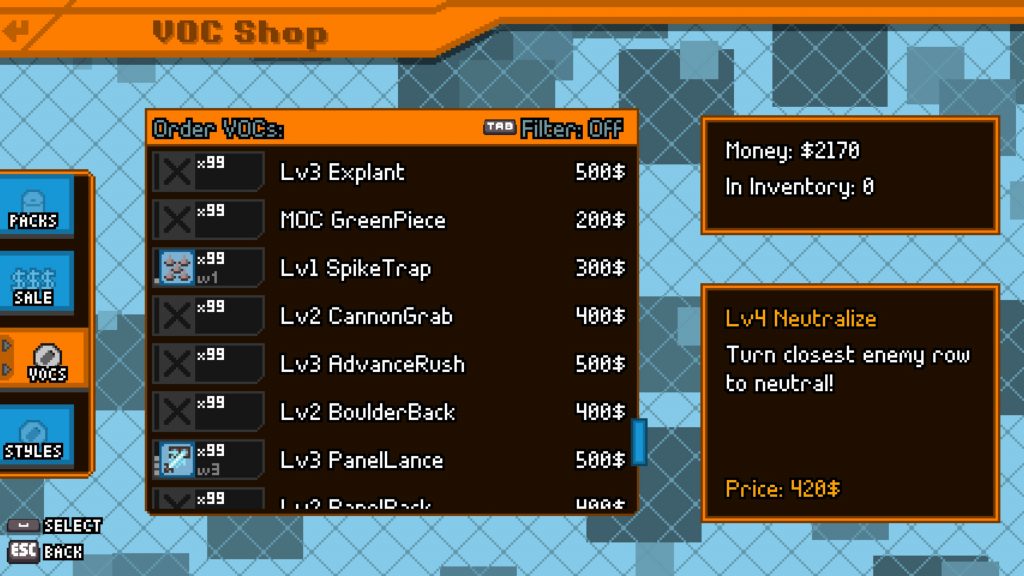
Now, less a problem and more “Something different, to maybe get used to” is the fact that, instead of getting a new “hand” of chips once you’ve used the last, you have three sets of four chips, each with cooldowns, and you can switch between chips with the space key, and use one of those four chips with the arrow keys. Okay, cool. But what this, generally speaking, means is that you’re either waiting on a cooldown, or rapidly switching between ability sets. Now, you can set everything to attack chips, if you really want, but it’s good to have some sort of healing, some sort of defence, and some sort of area or panel grab chip, which makes neutral panels yours, or enemy patterns neutral. Because you can only move on neutral or your panels, so without those, you can get hemmed in.
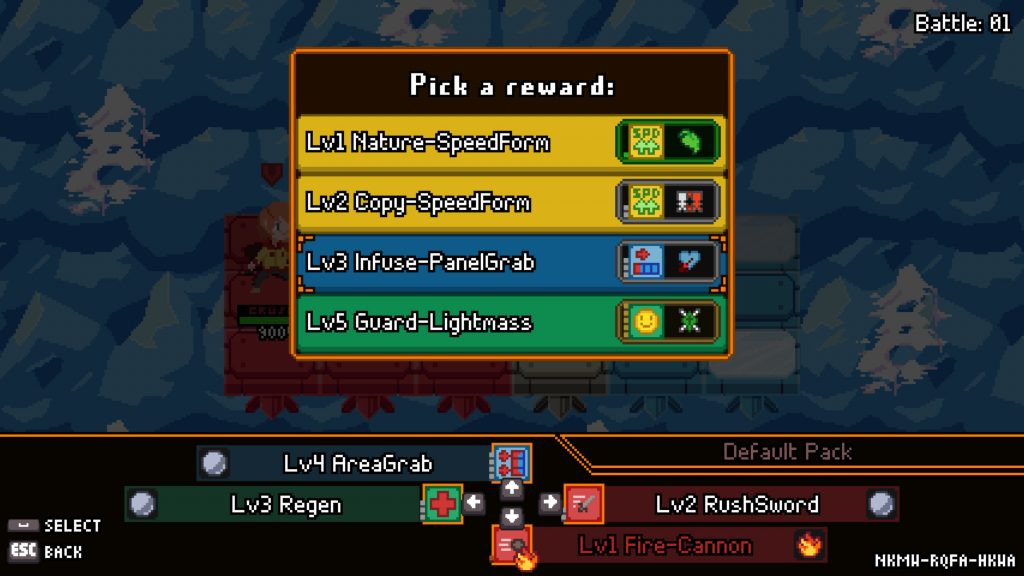
Aesthetically, it’s alright. The music is good, light, but pumping beats for combat, a synth theme, various other tunes, all inspired by… Well, its inspiration. The spritework’s alright, the menus have a consistent font, and my main gripe is that it’s hard to parse cooldowns when you’re concentrating more on the enemy’s position rather than, y’know, you. Where the icons and their cooldown shaders are.
Overall, it’s very obviously designed for the Pro E-Sports crowd, balanced around people who are twitchier, more timing aware, and fine with longish matches because they’re darting around so damn much. But that definitely isn’t for me, and I don’t particularly see it being appealing to more than a niche crowd within the niche that is people who like this sort of battle game overall, and the people who, like me, loved a game boy advance series from way back when.
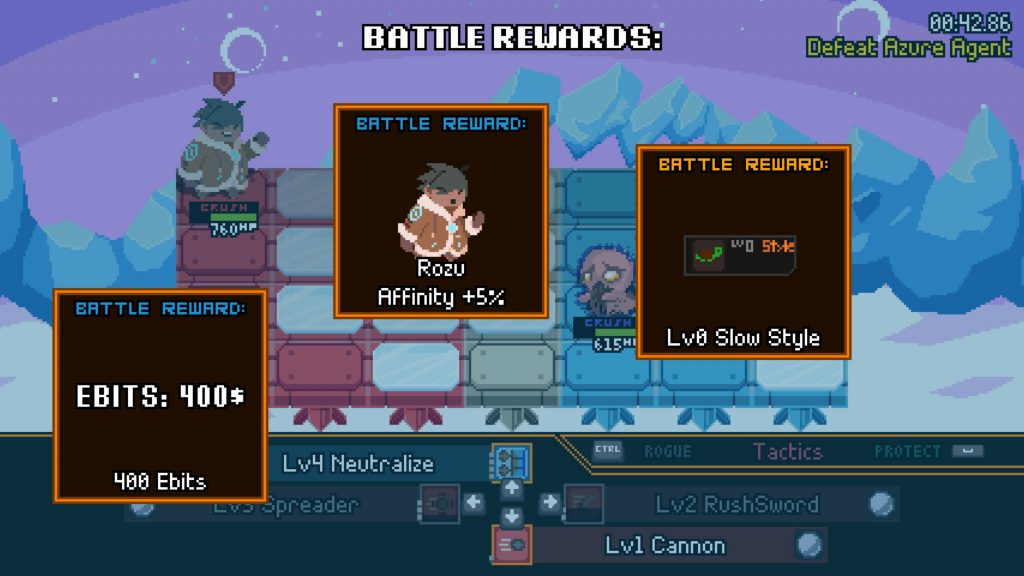
There are other games like this in my future. And so, I don’t actually have all that much interest in coming back to this.
The Mad Welshman lives in the cyberworld. He has to admit, it’s a somewhat dull place. You get used to those rushing neon comets quite quickly.




